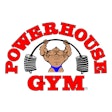Copyright 2017 Knoxville News-Sentinel Co.
All Rights Reserved
Knoxville News-Sentinel (Tennessee)
The fitness industry has been plagued with more myths than ancient Greece. However, of those that continue to be most common are myths surrounding strength and weight training. Let's debunk these myths once and for all so you can get on with the business of being strong and reaping the benefits of your labor.
1. Myth one: Women who weight train look like Rambo. This is a glaring misconception. One of the biggest differences between male and female athletes are their hormone levels and how these hormones behave - most specifically, testosterone. Testosterone leads to increases in muscle and bone mass. Men have significantly higher testosterone levels than women and therefore increasing muscle mass for men is much easier. The truth is lifting weights and increasing muscle mass can increase your resting metabolic rate and in turn help you burn more calories during work efforts and while at rest.
2. Myth two: The only way to burn fat is by doing hours of cardiovascular training. Thankfully, this is very false. While steady state cardio is great exercise for the heart-lung complex, we would need to spend countless hours pounding pavement to see an appreciable return for our efforts. A more effective way to burn fat and get more "bang for your buck" is by combining strength and cardiovascular training through High Intensity Interval Training (H.I.I.T.). HIIT is a great way to get the best of both worlds while burning more calories in less time.
3. Myth three: You can spot reduce fat. Unfortunately, genetics predominate our body's size and shape and how we store fat. We are predisposed to store fat in different places. While it would be great to do a few planks, and get rid of any belly fat, the reality is that our bodies are going to lose weight/fat at its own rate and on its own terms. Doing triceps presses to get rid of flabby underarms is not an amazingly effective course of action. Your time would be better spent moving several muscles (compound exercises) during the same exercise to maximize the calories burned.
4. Finally, our final myth: Muscle turns to fat when we stop exercising. Another utter falsehood. Muscle and fat are two different types of tissues, just like water and wine. There has only been one person who could turn water into wine. The adage of "if you don't use it, you'll lose it" is much closer to being true. If a muscle is not used, the individual fibers decrease in their cross-sectional size (get smaller, this is called atrophy). If we continue to eat the same as we have when we were training, but stop exercising regularly, of course we will put on weight. This is because our energy in would exceed our energy out, not because muscle is turning into fat. The bottom line is that if you stop moving and keep eating, you will most probably gain weight.
Angie Ferguson is an exercise physiologist from Fort Myers, Florida. She is a USA Triathlon Advanced Level 2 coach, Ironman Certified coach, Slowtwitch Certified coach, USA Cycling coach and has a Specialty in Sports Nutrition certification. For more training tips, read her blog at www.triathlontrainingisfun.com or contact her at www.gearedup.biz."
fitness
angie ferguson
Terms and Conditions Privacy Policy































